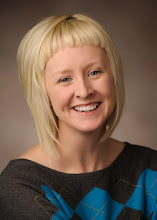Some of you may be familiar with the Vermont Center for the Book's Mother Goose programs. These programs are intended to help increase kids' school readiness - a personal passion of my own. The Lexington Public Library uses the Mother Goose math and science resources to incorporate math and science skills, along with early literacy skill development techniques, into our storytime programs. Bilingual Family Storytime is no exception. So far this summer we have had a hands-on science activity for parents and kids to work on together after every program, and they have loved it!
The first week we had a water theme to kick off our Summer Reading Program - Make a Splash at your Library. As promised in a previous post, I used I Know the River Loves Me / Yo sé que el rio me ama by Maya Christina Gonzalez, along with Salpicar / Splash by Flora McDonnell, Bebé Goes to the Beach by Susan Middleton Elya, and "Vamos a la mar" by Jose-Luis Orozco. Our science activity also used water - various objects were spread out and kids had to examine them and predict which objects would sink and which would float. They marked their predictions on a chart and then it was time to experiment. When I saw how much the parents and the children enjoyed interacting together to make the predictions and conduct the experiment, I knew I would have to keep trying this type of activity. I'm sharing the bilingual directions you can print out and use with this activity via Google Docs along with the bilingual chart we used to mark our predictions. Sample sink or float activities are available on the Mother Goose site, along with other resources.
Last week our program was about colors. The last story we told was Pinta ratones, also known as Mouse Paint, by Ellen Stoll Walsh. This story introduces the concept of primary and secondary colors. We followed this with our science activity. Using color paddles available from Oriental Trading, the kids were able to mix primary colors together (mess-free!) and make secondary colors. They had a lot of fun looking through the paddles and seeing Miss Katie turn green and purple!
Tonight we are talking about the weather. One of my favorite things about the summer is growing my own food in my garden, so we are starting off with A sembrar sopa de verduras by Lois Ehlert (Growing Vegetable Soup) to talk about seasons. To reinforce narrative skills, we will retell what happened first, middle and last in the story after we read it. Lexington is a rainy town, so we'll follow up with "Que llueva" by Jose-Luis Orozco, Un día de lluvia by Valeri Gorbachev, and (of course!) "La araña pequeñita." We'll come back to seasons with Oso bajo el sol by Stella Blackstone. The change of seasons in our climate produces a clear pattern. Every year we move from spring, to summer, to fall and winter. So our science activity tonight will be identifying patterns. I've set out one easy and one hard pattern using foam shapes. Kids and parents will work together to find the pieces that continue and complete the pattern. This is a school readiness skill, and it also reinforces narrative skills by helping children identify sequence. The Mother Goose site has a number of professional articles about the effectiveness of incorporating math and science into storytime, including this one about recognizing patterns.
Do you incorporate science skills in your programs? Do you have some other kind of hands-on activity for kids and caregivers at the end of storytime? Let us know what you are doing!
Giveaway Winner!
10 years ago




No comments:
Post a Comment